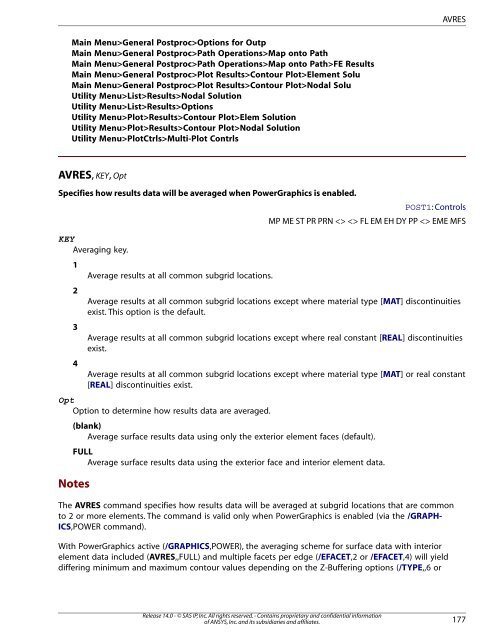
This command is seldom used as the users are already in this processor while working on their product. PREP7 – this command takes the users to the pre-processor.

The post-processor allows the users to work with their results, makes graphical outputs, and do in-depth post-processing.

POST1 – this command will take you to the post-processor. This is the most visited processor in product design and testing. This processor comprises of all the design modification and changes that need to be done to your geometry. SOLU – this command will take you into the solution processor. The following are the processor types and their respective commands. Regardless of where you are in the model tree of your project, if you need to go from your current processor to another processor, you just need to insert the proper set of commands to change the processors. If you create a command in your ANSYS APDL model, it will be performed directly into the pre-processor, solution processor, and in the post-processor. In the case where you input a preprocessor command when you are in the postprocessor section, the system will generate an error. The commands that the users use are at times dedicated to one processor only. In the past, there used to be more than ten processors, but now most of them have been undocumented. The APDL program has a total of ten processors. /SOLU – /POST1 – /PREP7 /FINISH – Processors.Some of the common set of codes are discussed below The APDL code system has a number of different codes that the users can memorize to speed up and streamline their workflow. Writing simple codes in ANSYS APDL Five common ANSYS APDL commands users should know Using APDL instead of the modern user-interface is said to give the users more power and control over each step of their simulation. ANSYS APDL is a time-tested old-fashioned command-driven program that allows the user to input line by line codes one at a time and execute them on demand. It comprises of a wide array of different features such as matrix and vector operations, do-loop and if-then-else functions.

APDL is commonly used to automate the task or even make a complete parametric model.


 0 kommentar(er)
0 kommentar(er)
